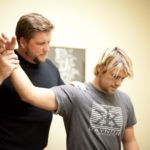
In the realm of modern medicine, various innovative techniques continue to emerge, providing new avenues for non-invasive treatment. One such method gaining prominence is Radial Shockwave Therapy (RSWT). Utilized in various medical fields, from orthopedics to sports medicine, RSWT is a promising technique that harnesses the power of shockwaves to promote healing and alleviate pain. In this blog post, we will delve into the mechanics of Radial Shockwave Therapy, exploring its principles, applications, and benefits.
Understanding Radial Shockwave Therapy
Radial Shockwave Therapy is a non-invasive procedure that employs acoustic shockwaves to stimulate the body’s natural healing processes. These shockwaves are high-energy sound waves that carry kinetic energy and are transmitted to the targeted area of the body through a specialized device. RSWT is often used to treat musculoskeletal conditions, including tendon and ligament injuries, plantar fasciitis, calcific shoulder tendinopathy, and more.
The Mechanics Behind RSWT
- Stimulation of Blood Flow: RSWT works by enhancing blood flow to the injured area. When shockwaves are applied, they create microtrauma within the tissues, prompting the body to respond with increased blood circulation. This improved circulation brings essential nutrients and oxygen to the affected area, supporting the body’s natural healing processes.
- Stimulation of Collagen Production: Collagen is a crucial protein that aids in tissue repair and regeneration. RSWT stimulates the production of collagen fibers, which helps in strengthening and healing damaged tissues, particularly tendons and ligaments.
- Pain Reduction: RSWT also influences the nervous system. The shockwaves can interfere with pain signals, providing a temporary analgesic effect. Additionally, the treatment triggers the release of endorphins – the body’s natural painkillers – leading to a reduction in pain and discomfort.
- Resorption of scar tissue: Scar tissue is often a problem in chronic conditions, as it can restrict movement and cause pain. RSWT can help to break up scar tissue and improve range of motion.
The RSWT Procedure
During a Radial Shockwave Therapy session, a healthcare professional will apply a gel to the targeted area to enhance the transmission of shockwaves. The shockwave device, often resembling a handheld tool, is then placed on the skin. The device releases controlled shockwaves that penetrate the tissues. The patient might experience mild discomfort during the procedure, but it is generally well-tolerated and brief, lasting about 15-20 minutes per session.
Benefits of RSWT
- Non-Invasiveness: One of the key advantages of RSWT is its non-invasive nature. It offers an alternative to surgical interventions and lengthy recovery periods.
- Faster Healing: By promoting blood flow, collagen production, and tissue regeneration, RSWT accelerates the healing process, allowing patients to return to their regular activities sooner.
- Pain Relief: RSWT provides both immediate and long-term pain relief by reducing inflammation and interfering with pain signals.
- Minimal Side Effects: The side effects of RSWT are generally minimal. Some patients might experience slight soreness, redness, or bruising in the treated area, but these effects are usually temporary.
Conclusion
Radial Shockwave Therapy represents a remarkable advancement in the field of non-invasive medical treatments. Its ability to harness the power of shockwaves to stimulate healing processes, enhance blood circulation, and reduce pain makes it a valuable option for individuals seeking relief from musculoskeletal conditions. As medical research continues to expand, we can expect further insights into the potential applications and benefits of this innovative therapy. Always consult a qualified healthcare professional to determine if Radial Shockwave Therapy is the right approach for your specific condition.






